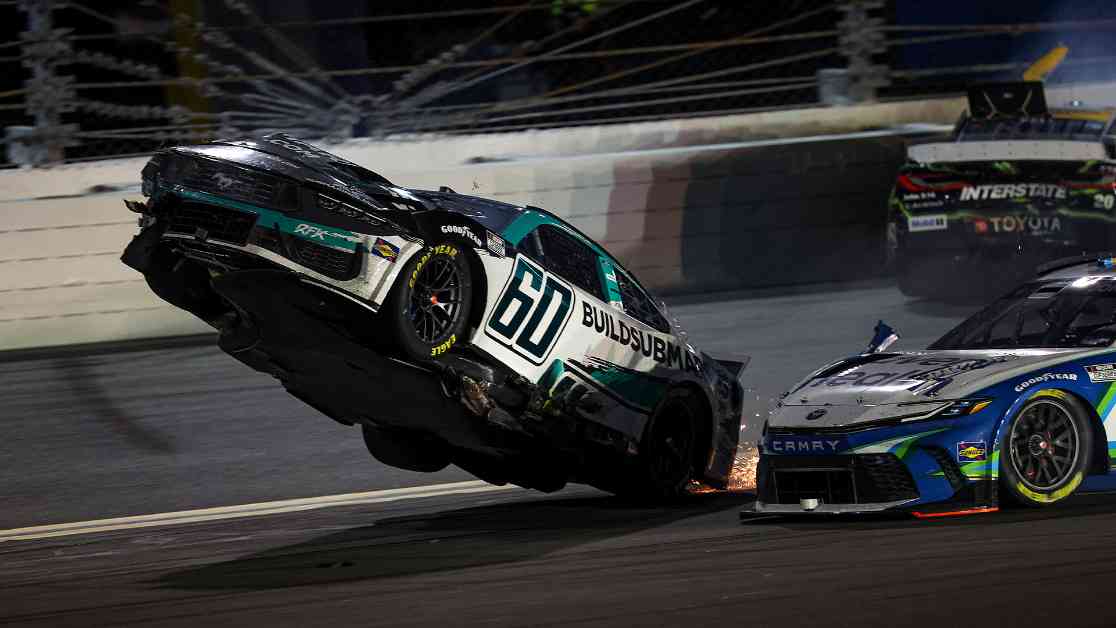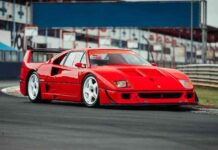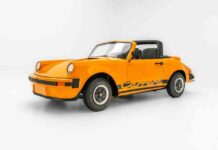The Daytona 500, NASCAR’s season opener, took a dramatic turn in the final laps as chaos erupted, leaving a trail of wreckage and raising concerns about the handling of the Cup cars. Among the drivers caught in the mayhem was Ryan Preece, who found himself at the center of a terrifying crash for the second time in three years at Daytona. The incident has sparked a debate within the racing community about the stability of the cars during high-speed collisions.
Preece’s harrowing experience unfolded when his No. 60 Ford Mustang made contact with Christopher Bell’s car, sending it airborne and into a sustained wheelie. The sight of the car soaring through the air, with its hood raised and rear bumper hovering, left spectators and fellow drivers in shock. As the car teetered on the edge of disaster, everyone held their breath, waiting for the inevitable descent back to the ground.
The descent, when it came, was a sideways flip rather than a full end-over-end roll. While this was a slight relief, it offered little solace to Preece, who found himself hurtling towards the wall on the roof of his car at breakneck speed. In a moment of clarity amidst the chaos, his thoughts turned to his daughter, a poignant reminder of the stakes involved in these high-stakes races.
Reflecting on the incident, Preece voiced his concerns about the current design of the Next Gen car, likening it to a “sheet of plywood” in windy conditions. The lack of stability during violent crashes has been a recurring issue since the car’s introduction, prompting calls for further safety improvements. Despite some modifications being made following previous accidents, Preece’s terrifying ordeal underscores the urgent need for more significant changes to protect drivers from such catastrophic events.
Expert Insights on Car Safety
In light of Preece’s comments and the alarming footage of the crash, experts in car safety and racing technology have weighed in on the matter. Dr. Sarah Reynolds, a mechanical engineer specializing in motorsports safety, emphasized the importance of continuous innovation in vehicle design to enhance driver protection. “Events like the one involving Ryan Preece highlight the inherent risks of high-speed racing and the critical role of vehicle safety features in mitigating those risks,” she stated.The Future of NASCAR Safety
As NASCAR continues to evolve and push the boundaries of speed and performance, the focus on driver safety remains paramount. With advancements in materials, aerodynamics, and structural engineering, the Next Gen car represents a significant step forward in enhancing crash survivability. However, incidents like Preece’s crash serve as stark reminders of the unpredictable nature of racing and the ongoing quest for improved safety standards.
The Future of NASCAR Safety
As NASCAR continues to evolve and push the boundaries of speed and performance, the focus on driver safety remains paramount. With advancements in materials, aerodynamics, and structural engineering, the Next Gen car represents a significant step forward in enhancing crash survivability. However, incidents like Preece’s crash serve as stark reminders of the unpredictable nature of racing and the ongoing quest for improved safety standards.
The Daytona 500 may have ended in chaos for Ryan Preece, but his resilience and determination to push past the fear and uncertainty embody the spirit of NASCAR. As drivers and teams regroup and prepare for the next race, the lessons learned from this dramatic event will undoubtedly shape the future of car design and safety in motorsports. The quest for the perfect balance between speed and security continues, fueled by the shared commitment to protect the lives of those who dare to chase victory on the track.










